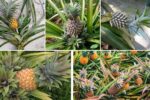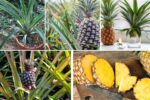A curious tropical fusion has been captivating fruit lovers in Southeast Asia: the durian–cempedak hybrid, blending the pungent creaminess of durian with the sweet, custardy notes of cempedak. Known colloquially as “durian cempedak,” this hybrid is still rare—so which country leads in growing it at scale? Despite its novelty, the undisputed leader is Malaysia, where agricultural research institutes and small farmers have championed and cultivated this hybrid most effectively.
What Is Durian–Cempedak Hybrid?
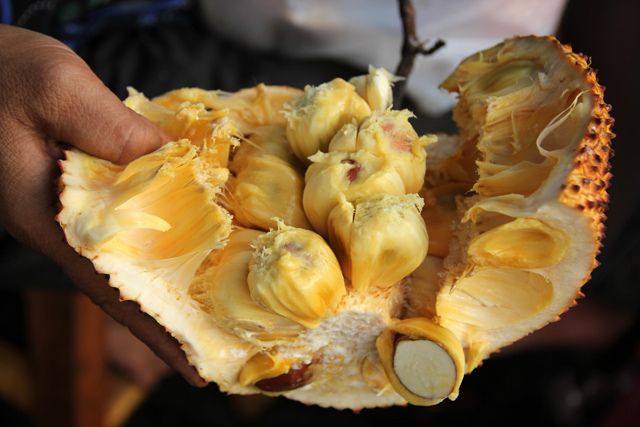
- Durian (Durio zibethinus) is renowned as the “king of fruits,” famous for its potent aroma, creamy flesh, and rich, custard-like taste specialtyproduce.com+5grantham.sheffield.ac.uk+5malaysiavegetarianfood.com+5researchgate.net+4en.wikipedia.org+4de.wikipedia.org+4.
- Cempedak (Artocarpus integer), a close relative of jackfruit, features soft, sticky yellow-orange pulp that tastes like a sweet cross of jackfruit and durian malaysiavegetarianfood.com+7de.wikipedia.org+7veliyathgarden.com+7.
- The durian‑cempedak cross, while technically within the same Moraceae family, appears more casually bred—often via grafting husbanding techniques rather than formal genetic hybridization, earning nicknames like “durian cempedak” or “nangchem” freshplaza.com.
Malaysia: Leading the Way
Origins & Cultivation
- Malaysia’s Selangor Fruit Valley and research centers like MARDI (Malaysian Agricultural Research & Development Institute) have developed the hybrid, marketed domestically as a novelty and novelty export freshplaza.com.
- These hybrids are prized for faster fruiting (2.5–3 years) and sweeter, denser flesh (Brix up to 35%), with a strong fragrance reminiscent of pandan-durian mash-ups specialtyproduce.com+6faiz-hardware.com+6en.wikipedia.org+6.
- Malaysia’s equatorial climate—warm, humid, and fertile—is ideal for both parent trees, allowing effective grafting and mixing of rootstock .
Market Reach & Farming Trends
- “Durian cempedak” is available in regional markets across Malaysia year-round, thanks to extended fruiting cycles researchgate.net+15freshplaza.com+15malaysiavegetarianfood.com+15.
- Farmers report strong demand at RM5–RM15 per kg, with hybrid fruit even shipped frozen to East Asia, such as Japan .
- Daily farm tours—including mangroves in Selangor—showcase hybrid trees, with agritourism helping spread awareness .
Taste Profile & Consumer Appeal
- The hybrid’s flesh is described as “caramel sweet with mango hints,” merging durian richness with cempedak’s fruity aroma and starchiness specialtyproduce.com.
- Some say it hits the sweet spot: “thicker, juicier, sweeter than cempedak, but more tolerant of growth conditions than durian”—making it a consumer fave freshplaza.com.
Other Regions: Smaller or Emerging

Indonesia & Thailand
- Cempedak trees dominate West Kalimantan, Sumatra, and Borneo, but formal durian grafts are rare. Most hybrids come from home gardens—a few experimental plots have emerged en.wikipedia.org+1researchgate.net+1.
- Thailand has limited hybrid growth and no major research pushing durian–cempedak production. Their focus remains on durian clones like Monthong and Chantaburi en.wikipedia.org+15en.wikipedia.org+15freshplaza.com+15.
Singapore, Philippines & Beyond
- Private growers in Singapore and the Philippines attempt trial hybrids, but commercial scale or cultivation remains minimal veliyathgarden.com.
- No scale of production or export exists—Malaysia remains the region’s innovator and leader in this hybrid fruit.
Why Malaysia Leads
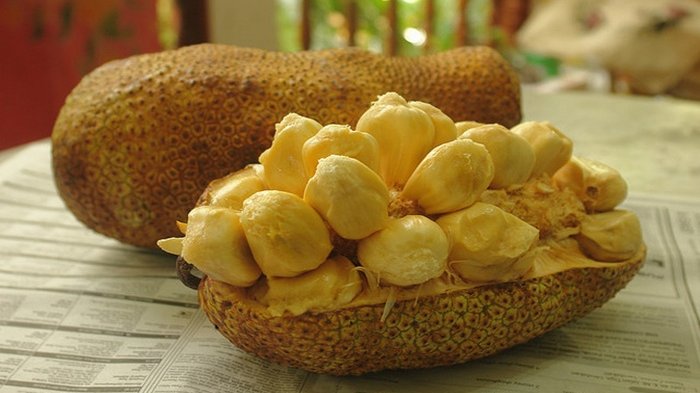
- Institutional Support – Bodies like MARDI and university partners actively foster hybrid grafting research.
- Ideal Agro-Climatic Conditions – Equatorial climate supports both parent species and powerful hybrid growth.
- Consumer Appetite for Exotics – Malaysia’s culture values bold fruit flavors, easing hybrid adoption.
- Agritourism & Marketing – Farm tours, farm‐to‐table events, and media exposure help drive farm focus and commercial interest.
- Rapid Yield Advantage – Hybrids fruit in 2–3 years—faster than durian, giving higher return potential grantham.sheffield.ac.ukfreshplaza.com.
Nutritional & Culinary Look
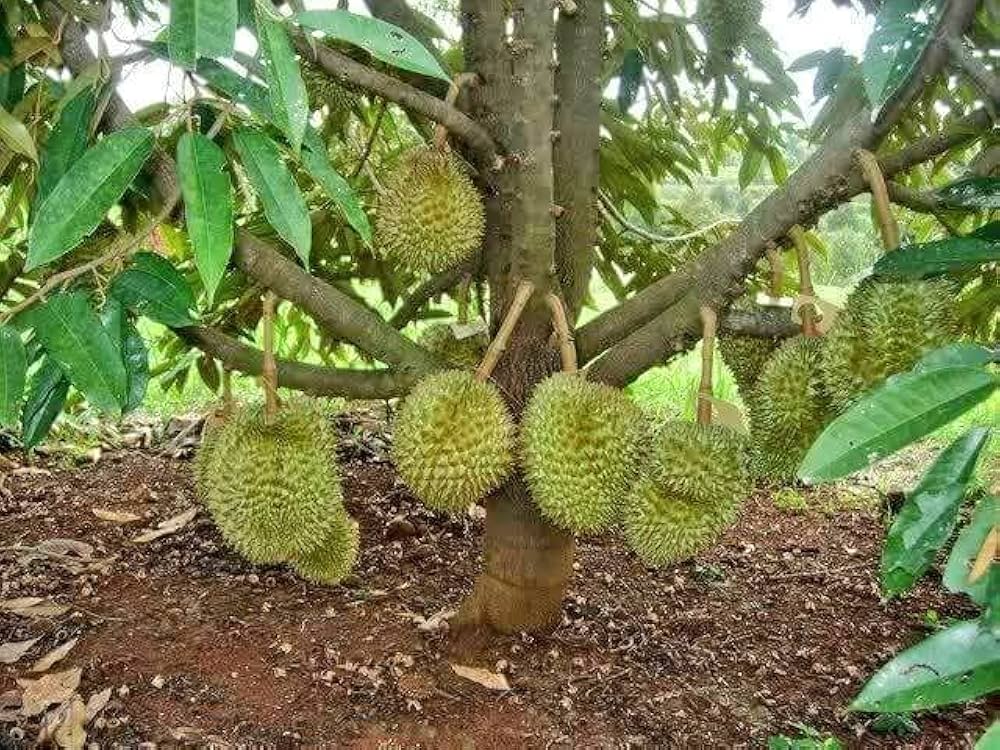
- The hybrid maintains lush durian-like fats and sugars alongside cempedak’s carotenoids, vitamins B, C, fiber, and antioxidants .
- Culinary uses include fresh eating, frozen pulp for desserts and ice creams, and novel flavor mixers in drinks and sauces.
- Hybrid seeds are edible post-cooking and sometimes likened to water chestnuts or chestnuts in flavor and texture .
Challenges & Considerations
- Intellectual Property & Quality Control – Malaysia lacks trademarked varieties beyond local names—standardization could unlock export markets.
- Climate Vulnerability – Heavy rains and pests threaten yield; hybrids may need more resilient rootstocks.
- Limited Awareness – Outside Malaysia, awareness remains low; global consumers still unfamiliar.
- Handling & Storage – Sticky sap requires careful post-harvest protocols to avoid spoilage .
The Future Outlook
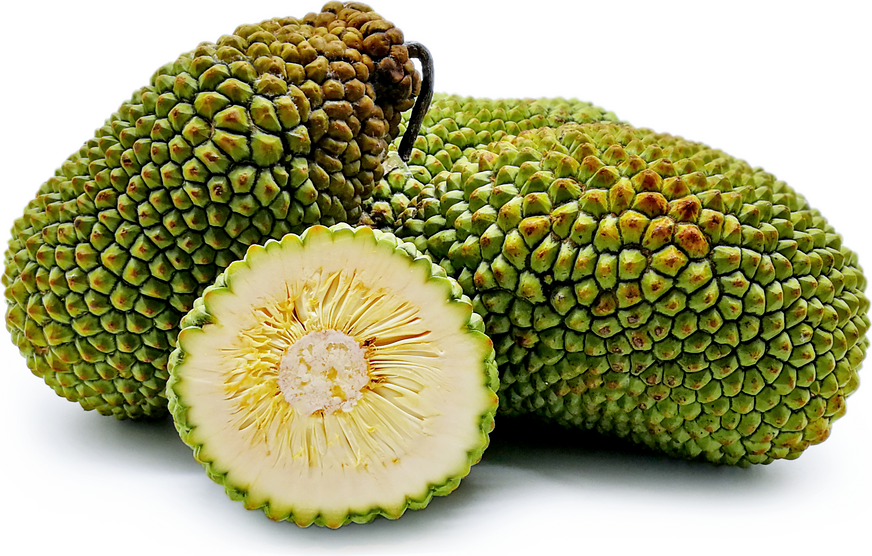
- Commercial Scaling – MARDI and private farms aim to scale hybrid cultivation and publish cultivar best practices.
- Export Potential – Malaysia eyes China, Japan, Hong Kong for frozen pulp export, leveraging existing durian networks.
- Value Addition – Opportunities lie in products like pulp concentrates, desserts, skincare infusions, and novelty preserves.
- Breeding Programs – Malaysia’s next goal is patenting hybrids that consistently deliver superior taste, disease resistance, and yield timelines.
Final Verdict
So, which country is the largest durian–cempedak hybrid producer? The clear answer is Malaysia. Schemes from MARDI, widespread grafting adoption, agritourism, and enthusiastic consumer engagement position Malaysia as the global hub for this exotic hybrid. While smaller-scale efforts in Indonesia, Thailand, and the Philippines exist, Malaysia’s combination of research, climate, consumer trendiness, and yield performance make it the uncontested leader.
As global interest in novel tropical fruits rises, Malaysia has both opportunity and momentum to introduce the durian–cempedak hybrid to wider international markets—potentially making it a world-class tropical delicacy, one pulp-filled spoon at a time.

